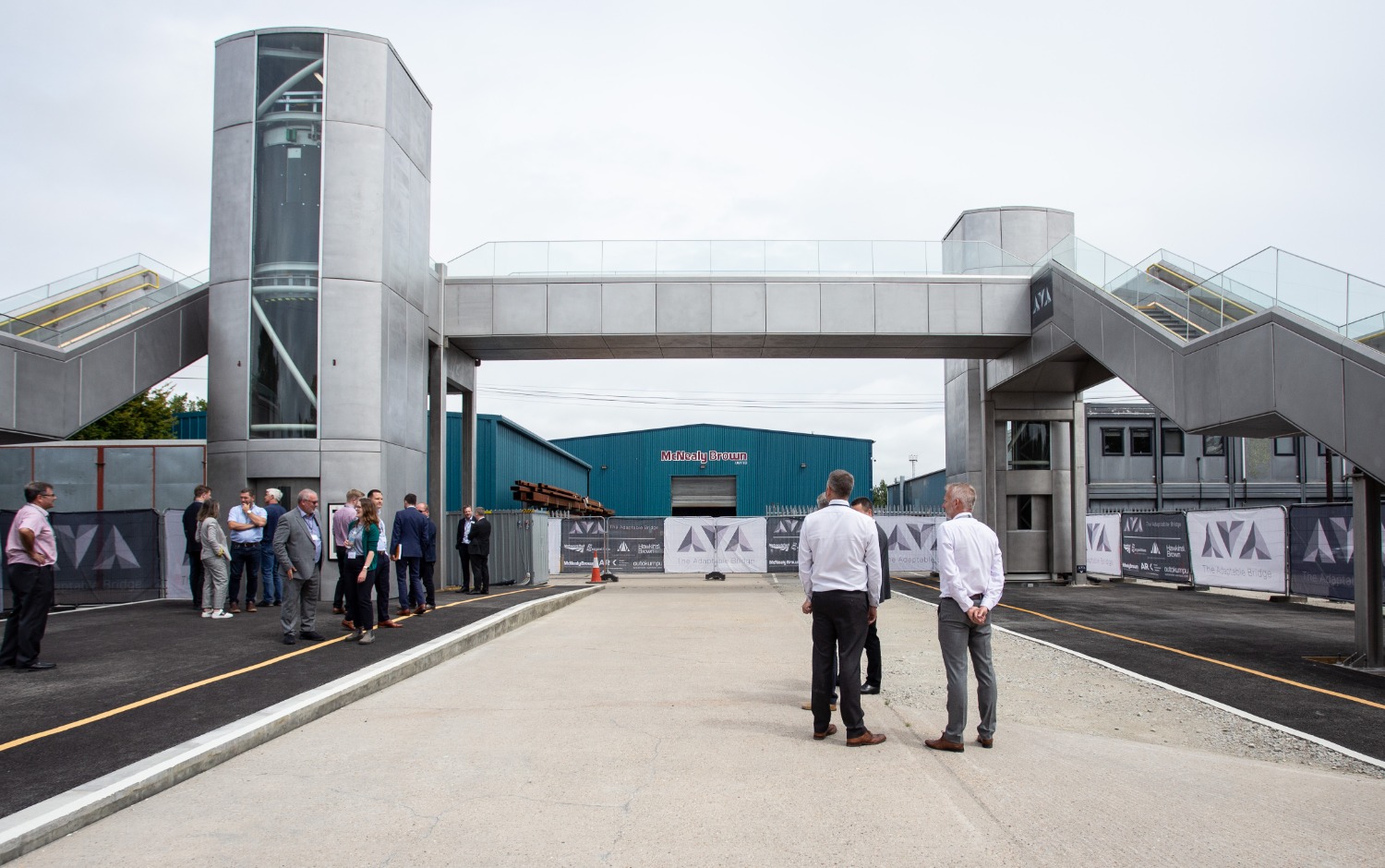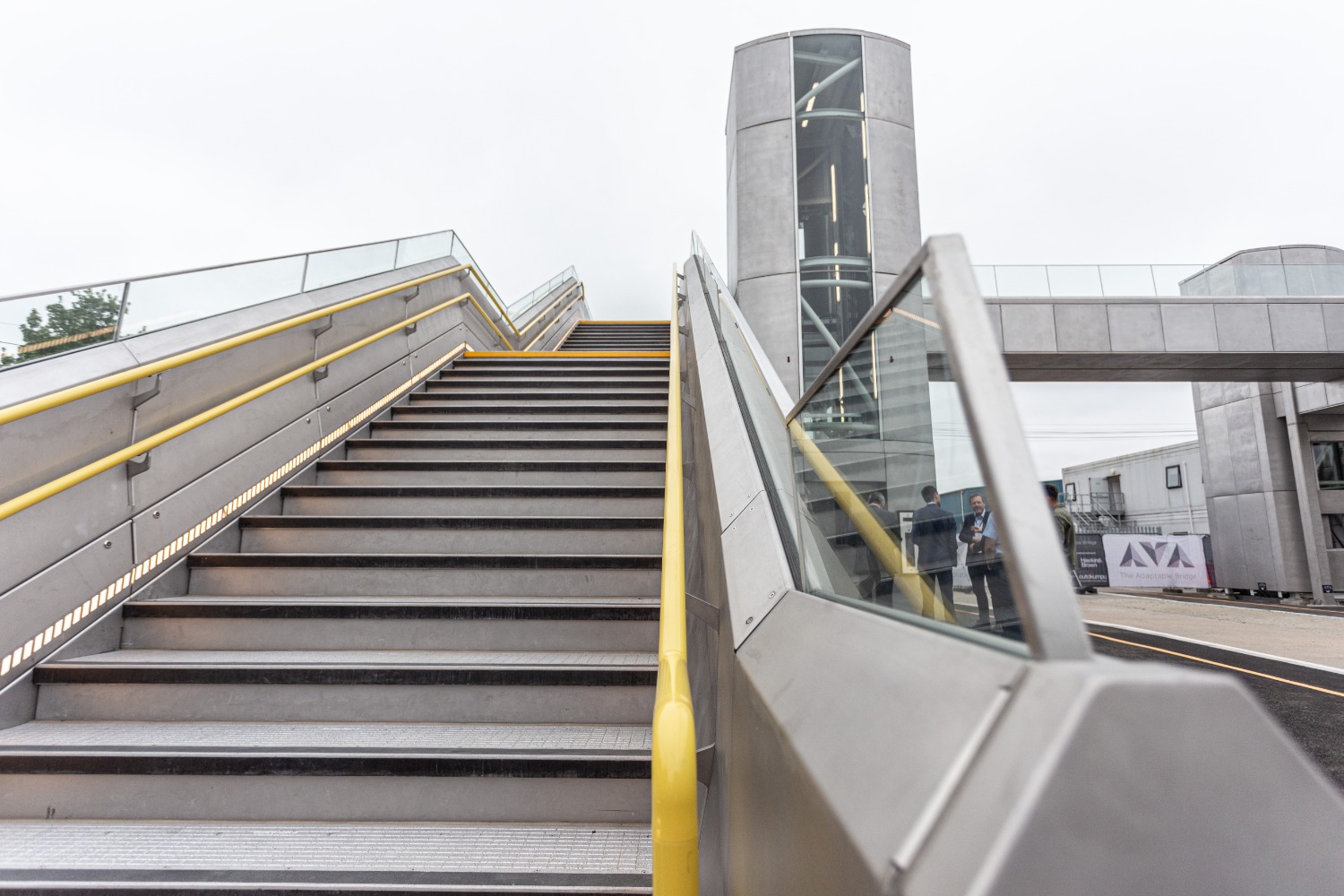
A fully-functioning prototype has been constructed of a new bridge tipped to be the future of accessible railway stations.
The AVA accessible bridge is designed to be more attractive for passengers, more reliable, and easier to maintain than traditional designs. Built with stainless steel, it’s also designed to be more long-lasting and doesn’t need to be painted.
Furthermore, the modular design and ‘plug-and-play’ lifts are intended to cut the time needed on site by over half, with it being easier to install. The lifts also feature built-in resilience and redundancy to avoid going out of service.

The prototype bridge, which features fully-operational lifts, has been on display in Kent for around a month – giving hundreds of railway colleagues the chance to use the crossing and properly see its scale.
AVA is part of the TIES Living Lab programme and was created by a consortium of Network Rail, Expedition Engineering, Hawkins\Brown, McNealy Brown, ARX, and Walker Construction, with funding from Network Rail Research and Development and Innovate UK. The prototype was constructed by McNealy Brown in their Sittingbourne site.

Network Rail’s head of buildings and architecture, Anthony Dewar, said, “You can look at models and drawings but there’s nothing like using the lifts, walking the stairs and feeling the scale of the full-size bridge to make you realise how good this design really is. We want to give passengers better journeys and provide a railway that’s better value for money, and to do that we need fresh designs like this.
“We want a bridge that is open and light so passengers feel secure, a bridge that looks modern, that makes people feel they’re travelling on a modern railway, we want lifts to be more reliable, and our colleagues want a bridge that’s easy to maintain, that can be installed more quickly and less disruptively… and also doesn’t need painting every 25 years! That’s why we have AVA.”











